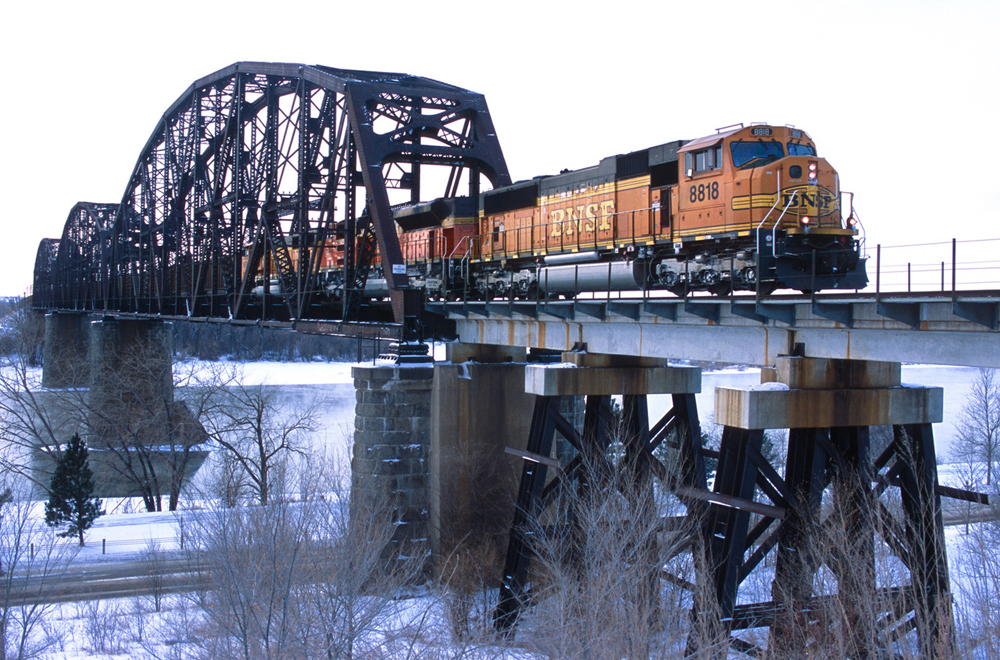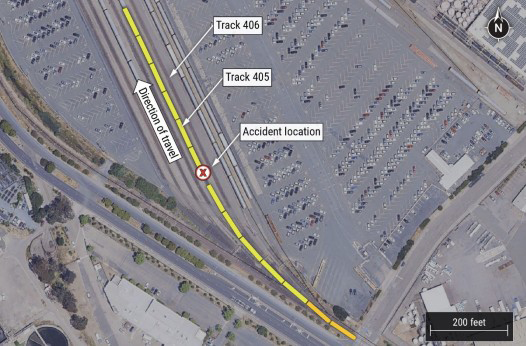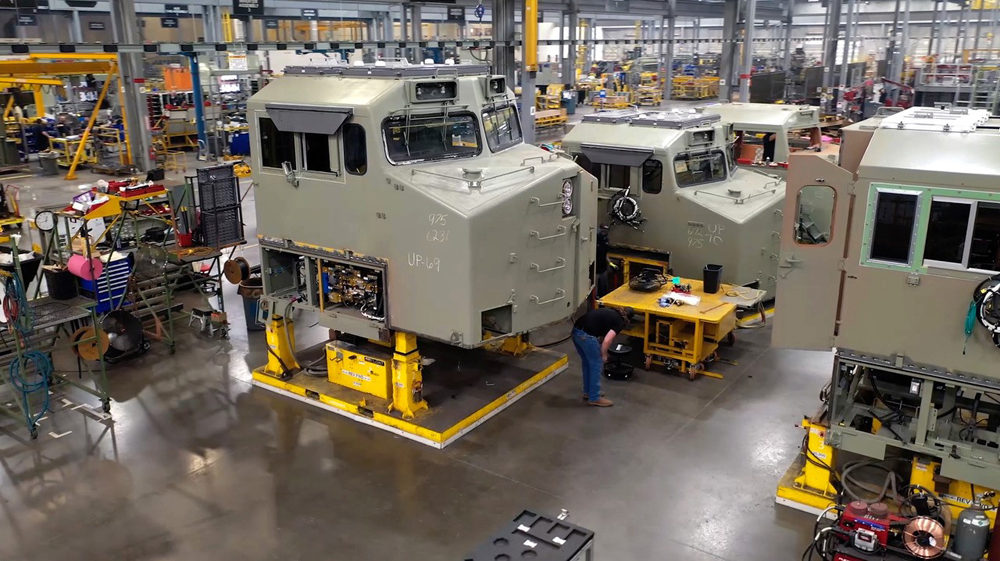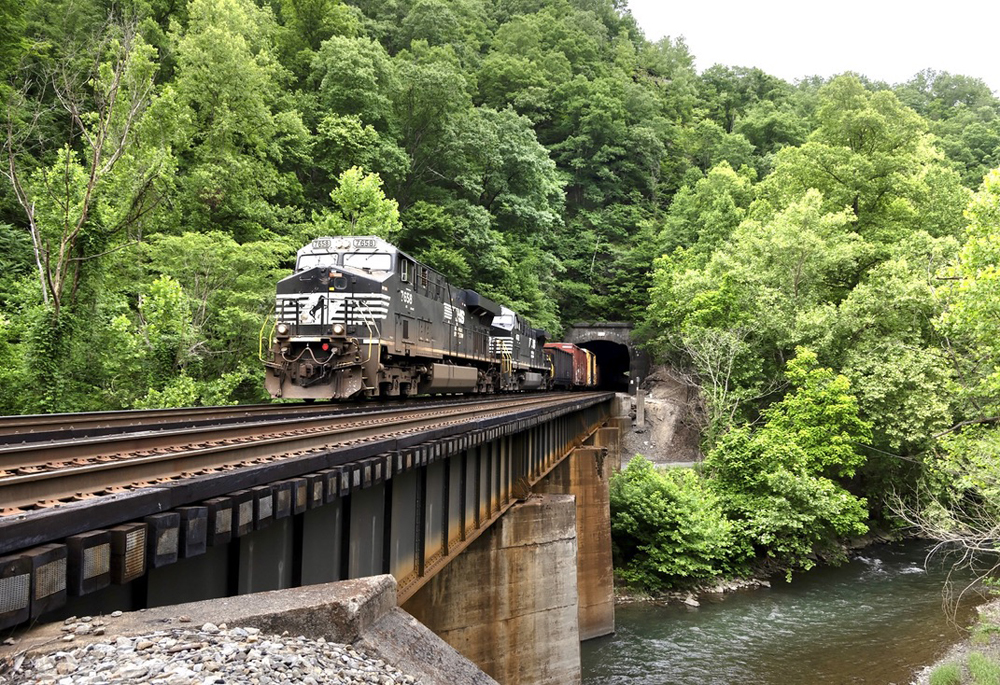
BISMARCK, N.D. — In a new twist to a lengthy battle by a preservation group to save a BNSF Railway bridge over the Missouri River between Bismarck and Mandan, N.D. — which has thwarted railroad efforts to build a new structure — the Friends of the Rail Bridge is claiming the bridge in question actually belongs to the state of North Dakota, not the railroad.
The Bismarck Tribune reports the preservation group is basing its argument on the concept that Congress held in trust structures in navigable rivers, including the bridge built by the Northern Pacific in Dakota Territory in 1864, and that it transferred to North Dakota upon statehood in 1889 because Congress did not specifically grant ownership to the railroad.
State ownership would give the bridge protections under North Dakota law, requiring the State Historical Board to approve the structure’s demolition, Mark Zimmerman, the Friends board president, told the newspaper.
BNSF spokesman Amy McBeth said the railroad is preparing a response and called it “interesting” that the ownership question has only been raised after five years and 20 meetings.
BNSF has been seeking for years to replace the 1,525-foot-long bridge, which rises 70 feet above the river and features piers built by NP in 1882 and a superstructure dating to 1905. Because of its age, it currently requires a 25-mph speed restriction. But the efforts of the preservation group have complicated the permitting process for the new bridge [see “BNSF focuses on regulatory challenges …,” Trains News Wire, Jan. 8, 2019].
The railroad, U.S. Coast Guard — which is involved because the Missouri River is a navigable water way — and the Friends group reached an agreement in January 2021 that allowed BNSF replacement efforts to move forward without a decision on the final disposition of the current bridge. But the railroad asked permission to move ahead later that year, citing the preservation group’s failure to meet some terms of the earlier agreement [see “BNSF seeks to end Missouri River Bridge preservation efforts …,” News Wire, May 3, 2021].
The Friends group is now seeking to exit the January 2021 agreement, saying it placed an “undue burden” on the group to fund a proposed conversion of the existing bridge for pedestrian use.
BNSF’s McBeth says that if the existing bridge remains, it could increase costs of a new structure by $50 million and lead to a delay of several years to account for new design work and other changes.














BNSF should politely give North Dakota a choice: Replace the bridge. Or, get used to a lot of rail trails where the railroad used to be.
I use my bike or walk as much as possible for work and shopping. That is why I only gas up my car up once every month or two. I love going on bike rides after work. 10 to 20 miles a day for work and excersize is normal for me. I know very well how lacking the current transportation network is for non motorized travel. I feel that a national recreational trail network is what is needed. Similar to how highways for automobiles are built. It’s sad to see so much valuable infrastructure like this bridge being thrown away when it could be repurposed. If this was going to be used by automobiles they would have the needed funding in a flash.
As if building a new bridge alongside the existing one would require that much redesign on the part of BNSF…that’s very suspicious and I’m highly skeptical of that statement. After looking at the Google satellite image of the bridge in question, I call BS on the BNSF, they could easily build a new bridge either on the North side or South side of the existing bridge with minimal change the the current route…might be a minor S curve needed but otherwise it looks quite feasible from a terrain standpoint.
Does BNSF plan to reuse the existing piers and footings for the replacement bridge, or build new ones? If they plan to reuse them for the new bridge, then it would explain the extra effort needed for a redesign. Not to mention the hassle, time, and expense of putting new piers into the river, with all the related permits.
I agree with Charles. The group can raise the funds and buy the bridge. This is why progress is so difficult to come by in this country.
FORB’s research is public record and is posted at http://www.friendsoftherailbridge.org
North Dakota, John.
Thanks!
So, does this mean that BNSF can ask the state of North Dakota to reimburse the railroad for all of the maintenance work performed on this bridge since 1889? That could be a pretty good sum of money, don’t ‘cha think?
Great point Steve. Let it fall into the river and the see who claims ownership ritghts.
I reached out to a friend and he said, the original builder of the bridge probably sold parts of their federal land grants to finance the bridge construction. So technically it may not be owned by South Dakota at all. The easement for the ROW is still an easement passed down through the statehood act “in trust”, but the bridge would be considered real property acquired through the sale of a legal asset granted by Federal Law.
Their conclusion? The bridge belongs to the railroad.
Very good arguement with a minor mistake: The bridge in question is in North Dakota, not South Dakota.
“BNSF spokesman Amy McBeth said the railroad is preparing a response and called it “interesting” that the ownership question has only been raised after five years and 20 meetings”
That is because a good lawyer or real estate historian did their research and found that these railroads were built under Territory (Federal) law, not state law.
I am not surprised because I read about how so many trusts set up in the late 1800’s were trampled over in the 1930’s and 1950’s in the name of progress. There have been many cases of property held in trust being subverted by the trustee for purposes outside of the grantors original intent. In this case I don’t think it was subversion, it was just a general public assumption that when South Dakota became a state, everything legally just came with it!
Hey, preservationsists, you may have a point! We all love old truss bridges. In fact there’s an abandoned CNW truss bridge left standing not far from where I live myself.
Preservationists, pass that hat and buy the bridge …. and post a bond to ensure that you will maintain it in perpetuity. That includes maintenance of the bridge itself and whatever navigation aids are required for river traffic.